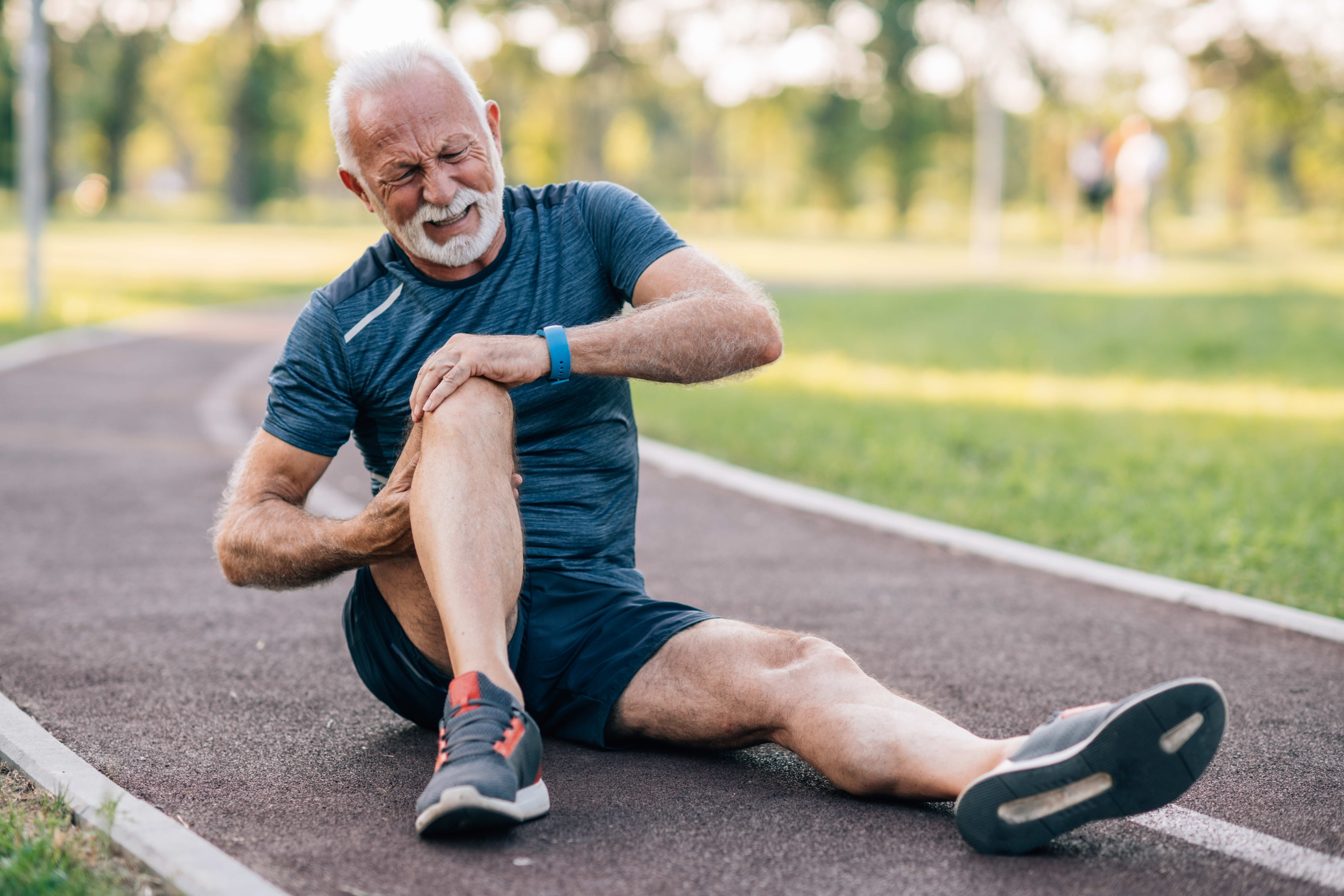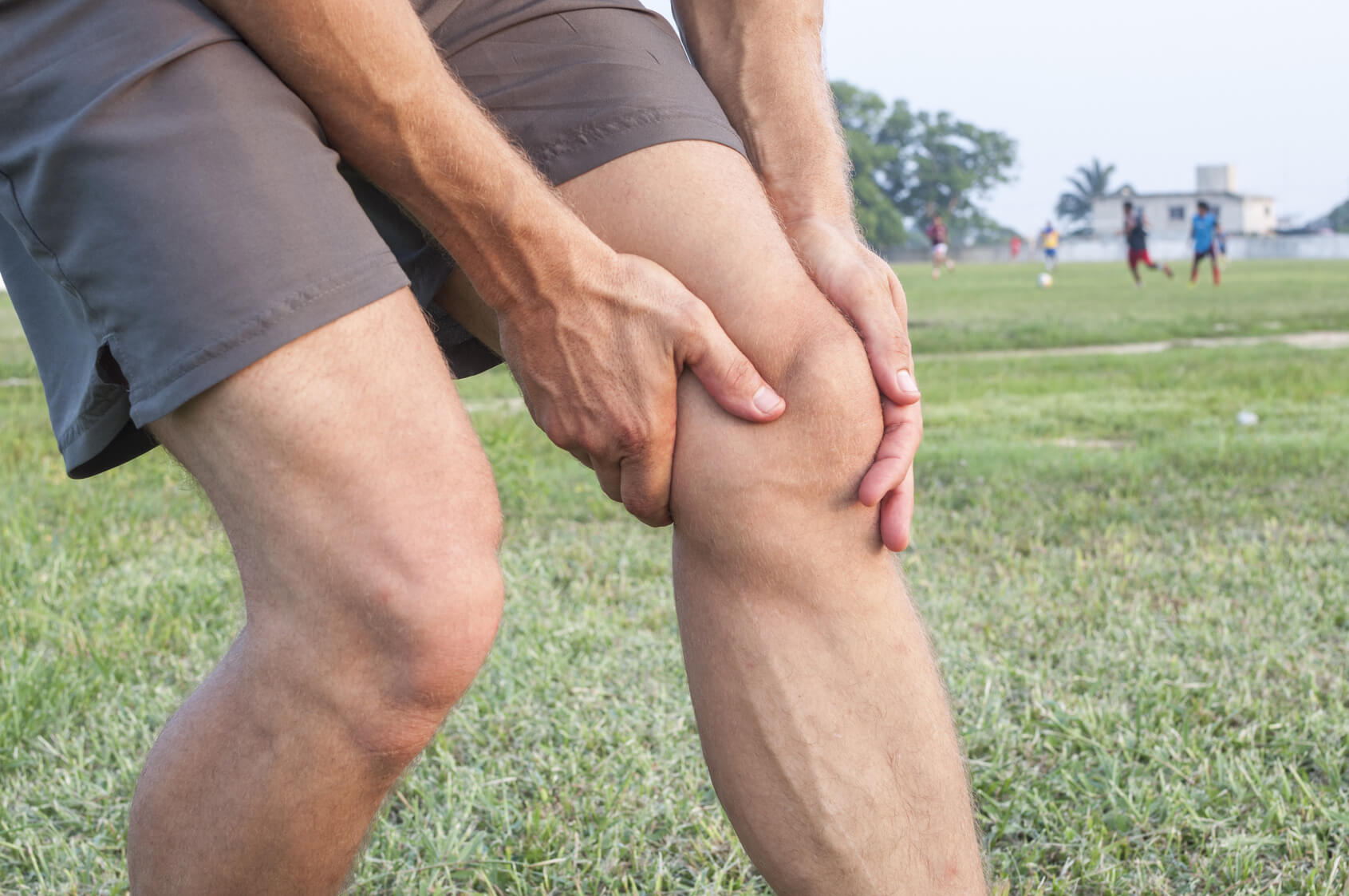Don’t leap to surgery first – learn how medication, physical therapy, weight loss, assistive devices, and injections help get people with knee or hip arthritis back to the activities they love
When it comes to treating hip or knee arthritis, you may have more options than you realize. The hip and knee joints move in different ways but the options for treating them are actually quite similar.
Arthritis is defined as inflammation of the joint. Osteoarthritis is the most common form of arthritis. It usually occurs as a result of wear and tear from everyday life, causing the cushion (articular cartilage) in one’s joint to wear down. Typical symptoms of arthritis include pain, swelling and stiffness, which all limit one’s ability to perform activity. When the cartilage eventually wears completely away, leaving bone against bone, that can feel as bad as it sounds.
There is no cure for arthritis. Fortunately, there are options to reduce pain and improve mobility. The first move is to get help early.
Any person who believes he or she may have arthritis should be evaluated first by an orthopedic specialist. The sooner the problem is identified, the better chance we have to keep the patient active and pain-free.
Make an appointment if you think you might have hip or knee arthritis
At Golden State Orthopedics & Spine we have excellent physicians who specialize in the hip and knee joints. Treatments for both hip and knee arthritis are fairly similar. We believe it is important to offer the entire spectrum of treatment options to our patients, educating them on the full range from the most conservative, such as medications, to slightly more involved injection options, to hip/knee replacements. Surgery is always the last resort.
We seek to build relationships with our patients to best support their entire orthopedic journey. The right treatment plan is different for every patient and navigating the information can be difficult.
Following are the five nonsurgical treatment options for hip or knee arthritis.
1. Medication for joint pain and swelling
The first option for arthritis symptoms is medication. This includes predominantly over-the-counter (OTC) nonsteroidal anti-inflammatory drugs (NSAIDs), such as Motrin, and prescription forms, such as naproxen sodium. Acetaminophens (Tylenol) is solely an analgesic, which is a pain reliever, without anti-inflammatory effects. It is usually better tolerated by patients with kidney problems.
Do not take any OTC medications for more than 14 days without checking with a doctor. Taking them for long periods of time can increase the chance of side effects.
Additionally, we emphasize the importance of minimizing narcotics. Common narcotics used for arthritis include hydrocodone, oxycodone and morphine. While narcotics can be very effective in reducing pain, they can often lead to addiction and cause withdrawal when trying to quit. We typically prescribe narcotics as a part of a multi-modal pain protocol developed specifically for short-term, post-surgical pain control. However, they are not a long-term solution.
2. Physical therapy for hip arthritis & knee arthritis
Physical therapy is one of the most crucial components in orthopedics. The goal of physical therapy for those with arthritis is to restore the use of the affected joint(s), by improving mobility, increasing strength to support the joint, reducing joint stiffness and maintaining the ability to perform daily activities.
A physical therapist will make an individualized plan for each patient to achieve optimal physical function including balance, strength, flexibility and coordination. The therapist can teach you stretching techniques and show you how to work out stiffness without further damaging the joint. You can then do so at home or at the gym as part of a home exercise program.
Our physical therapists may also use different “modalities” as part of the treatment. One example is transcutaneous electrical nerve stimulation (TENS), which involves placing electrodes on the skin to send weak electrical currents to stop pain signals from reaching the brain. Other forms of modality include cold-therapy and ultrasound, which can decrease soft tissue inflammation.
3. Maintaining a healthy weight – a DIY arthritis treatment
Extra weight is a problem for both hip and knee arthritis because it increases the load placed on the joint. Studies have shown that every pound on your body equates to four pounds exerted across your knees while walking, and nine pounds with stairs.
I recommend that patients use a body mass index calculator to learn if they are overweight or obese. We typically use this information to set goals to maintain a healthy weight and to reduce arthritis symptoms.
Prior to starting any major weight loss program, it is recommended to meet with a doctor so he or she can help customize a program and safely monitor your progress.
Maintaining an optimal weight has other important benefits. It will facilitate recovery from surgery if it is eventually needed. Being overweight is associated with significantly higher complications after hip and knee replacement. Some studies show a 9-times higher risk of infection in overweight patients compared with normal weight patients. Additionally, weight maintenance also helps the longevity of your hip and knee replacements.
Remember, every pound counts!
4. Hip & knee braces or assistive devices
A brace can provide external support for the joint, and therefore reduce load, improve stability, and relieve pain. While braces are more commonly used for knee arthritis, there are new brace options for hip arthritis as well. Braces are usually worn during activities. At GSOS, we have a wide selection of bracing options and brace specialists to personally fit them for our patients.
Assistive devices are another option for hip arthritis or knee arthritis, such as a cane or walker. These can help with improving balance and providing support. A cane can support up to 25 percent of a person’s weight, while a walker can support up to 50 percent. We also utilize these assistive devices as a part of our post-surgical rehab plan after hip and knee replacements.
Prior to purchasing a brace, cane or walker, it is important to see an orthopedic specialist who can help determine if an assistive device is the best option for you.
5. Biologics options for hip & knee arthritis
Biologics can be a great alternative to surgery. They can delay surgery for months to years, or can even be used in place of surgery in some patients.
Biologics are innovative treatment options which can be used in orthopedic medicine to treat a variety of conditions to eliminate or reduce pain, and to stimulate the natural healing mechanisms of the body. Usually they contain naturally occurring substances that induce a healing response in one’s body. They can be used alone or in conjunction with other treatments such as surgery and physical therapy.
There are many conditions which may benefit from the use of biologics including arthritis, injuries from sports or active lifestyles and pain, both acute and longer term (chronic).
Surgery is the last resort! Hip and knee replacements (arthroplasty)
We believe that surgery should be the last resort. The goal of replacement surgery is to decrease pain and stiffness, therefore allowing our patients to return to an active lifestyle.
When nonsurgical options fail, we have an open discussion with our patients and their family about what surgery entails. We have devised a detailed plan for all patients undergoing hip and knee replacements. It is part of the GSOS team approach, from pre-op to day of surgery to post-op.
There are many options when it comes to surgery. For example, there are multiple approaches to performing a hip replacement. Over 75 percent of surgeons in America perform the conventional posterior approach. We utilize the anterior approach where possible, which we believe allows for a faster recovery. Our patients are up and walking just a few hours after their hip and knee replacements. We are very particular about every step of this process because we want our patients to have the best results.
The most rewarding aspect of our job is seeing the dramatic improvements in our patients after their hip and knee replacements. Many of them tell us it is the best decision they’ve made and wish they had done it sooner.
Learn more about the most common hip and knee surgeries & treatments we offer
Arthritis is a common and growing problem, both for the young and the aging populations. If you have any concerns, schedule an appointment to learn about your treatment options. It is the first step for many patients in their journey back to an active and pain-free lifestyle!



